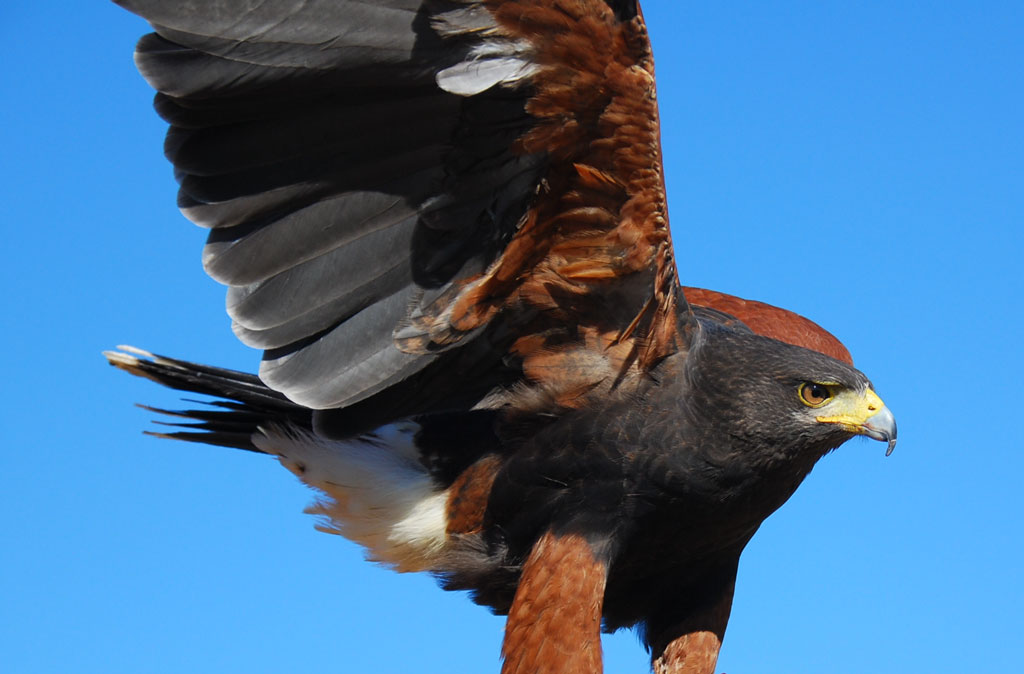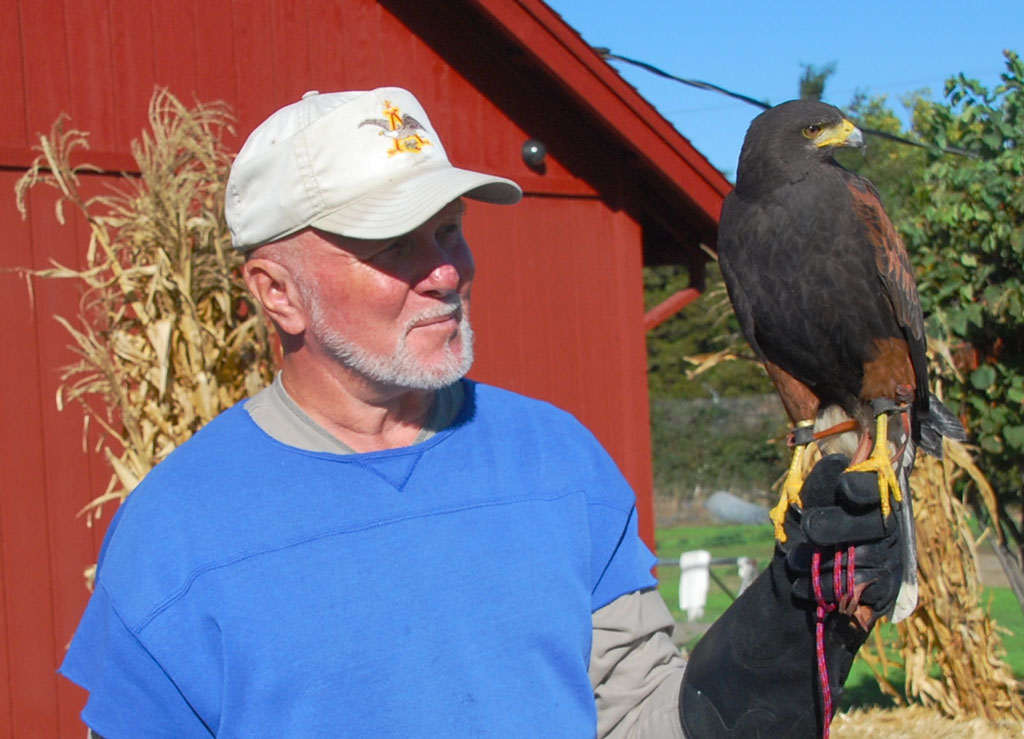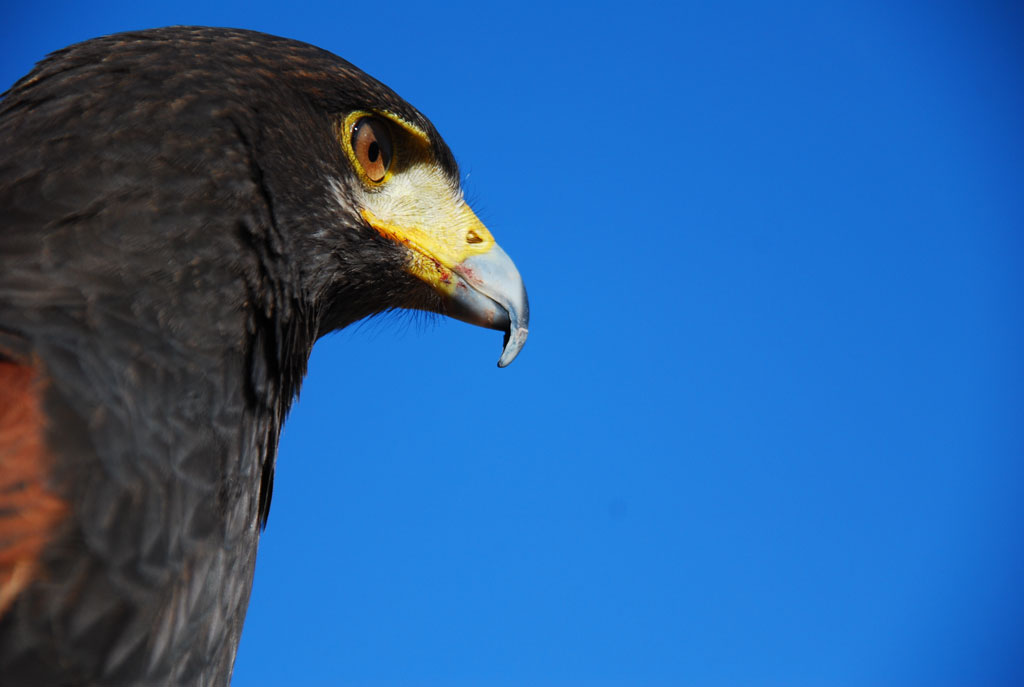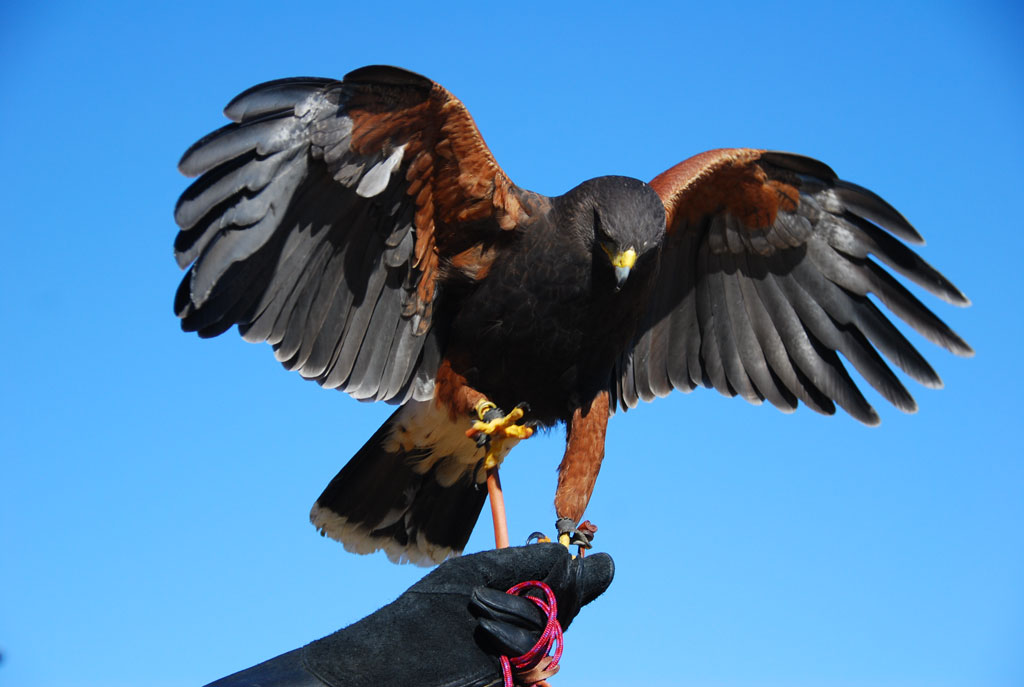Harris Hawk Visits the Wildlife Center
Recently the Wildlife Center hosted a rather unusual visitor – a Harris Hawk! This beautiful bird was brought in by a kind person, and it was quickly apparent not only from his non-native status in our area but from the falconry jesses he wore that this was a falconer’s bird. In a case like this it would do us little good to contact other wildlife care groups, as we needed to reach the falconry community. Senior raptor handler Jim Furco quickly began to reach out to local falconers to spread the word that we had recovered this bird and were looking for the owner. Falconers are licensed by the state and federal governments, and must hold permits with the US Fish & Wildlife Service for each bird they have. They are required to go through a rigorous training, study and apprenticeship period to possess and work with raptors (birds of prey). In recent years more use has been made of falconers to clear birds from airport runways to avoid damage to plane engines, and to chase birds from agricultural areas to decrease damage to crops.
The practice of falconry, or hunting with birds of prey, goes back thousands of years, and is still active in many parts of the world today. Naturalist and bird artist Roger Tory Peterson wrote, “Man has emerged from the shadows of antiquity with a peregrine (falcon) on his wrist.” Falconry was a status symbol as well as popular sport for nobles in medieval England and Japan. The cost of maintaining and training birds of prey was one reason it was largely restricted to the noble classes, but strict regulations also played a part. Certain birds like peregrines and gyrfalcons were reserved for the nobility, and some of the first laws aimed at protecting wildlife were for birds of prey. Fortunately, we were contacted by Rebecca Rosen, the owner of the Harris Hawk. She is a working falconer who uses her birds ? to clear runways at March Air Force Base in southern CA. She and the Harris Hawk were working at Genentech in Vacaville when they became separated. Rebecca was very glad to see her bird and from the happy noises he made, the bird was glad to see her too! It was an exciting experience to have this unusual bird, native to the Southwest, as a brief guest. Congratulations to our staff, especially Jim and Margie Furco, for such a wonderful job with this bird.
Borrowed Falconry Words
Falconry terms were at one time used only by the nobility who pursued the sport. Modern falconers still use these terms, and a few have found their way into modern English and are in common usage, though the modern meaning may be very different. Some examples: The word codger, used today to describe an elderly person, can be traced back to the falconry term cadger, or a person who carried a cadge, or portable perch for the birds in the field. Most cadgers were old falconers and in time a corruption of this came to be used to describe elderly persons. Callow, which is a nestling raptor whose feathers are still in the blood stage, is now used to describe someone young and untested. When raptors drink, it is called bowsing. A bird that drinks heavily is called a boozer, the term used to describe the same tendency in humans.


-1.jpg)
Jim Furco, Wildlife Center Raptor Handler


-1.jpg)
-1.jpg)
Reunited with Rebecca Rosen
Back to SMNHA Homepage